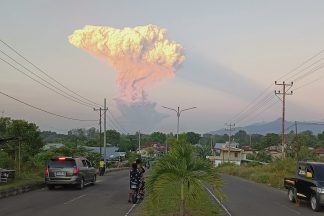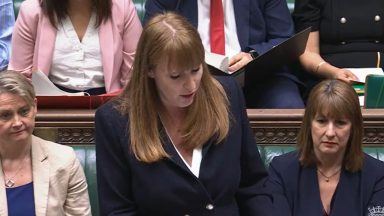The world is likely to break a key temperature limit for the first time within the next few years, scientists have predicted.
There is a 66% chance a global average temperature of more than 1.5C above pre-industrial levels will be recorded between now and 2027.
The World Meteorological Organisation (WMO) report also predicts a 98% chance Earth will experience its hottest year on record in the next five years.
At COP21, in December 2015, countries around the world signed the legally binding international Paris Agreement.
It included the goal of limiting global warming to 1.5C.
If a 1.5C temperature rise is recorded by 2027, it would not mean the target set in Paris would be lost as the global average temperature would need to exceed that level several times before the climate can be said to have permanently warmed to that level.
What will El Nino change?

I’m sure you’ve at some point heard of El Nino, well there’s also a La Nina, which is basically the opposite.
These names are given to natural fluctuations in ocean temperatures in the mid Pacific that run in cycles of several years.
La Nina, which is the cool phase where the ocean surface gets colder, has been in place since around 2020.
Both phases have impacts on global temperatures and extreme weather, with La Nina bringing cooler conditions to much of Asia and western parts of Southern America, but warmer conditions to the Philippines and Australia.
El Nino tends to warm more places, with Australia and Asia experiencing warmer conditions, as well as Alaska, western Canada and the western US having warmer winters.
We’re now moving into an El Nino phase, and this increases the chance of higher global temperatures, especially in the year after it develops, which would be 2024.
This means global temperatures are likely to reach their highest levels on record and could breach the cap set by COP26 just a few years ago.
Because Scotland is so far away from the Pacific, the impacts on us are a bit sketchier, although we do tend to experience warmer summers in El Nino phases and an increased risk of cooler winters.
While these are natural fluctuations, it’s the human impact on top of the natural warming that gives us higher peaks than ever to keep pushing these extremes.
The WMO’s report has sparked calls for urgent action on fossil fuels.
The Intergovernmental Panel on Climate Change has said damage wrought to people and wildlife will increase with every increment of global warming.
It’s only when we can start shaving the top off the extremes through changing how people live around the world, that the big extremes will hopefully start to be reduced.
Follow STV News on WhatsApp
Scan the QR code on your mobile device for all the latest news from around the country






















